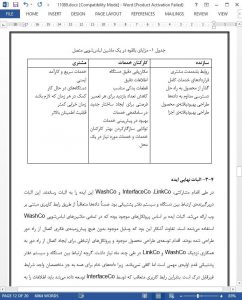Abstract
Are you ready for what’s coming? As senior managers look to connect products, processes, and services to the growing field of the Internet of Things (IoT), this is an important preliminary question. Leveraging the IoT for firm benefit involves revisiting certain ideas that may have gone unquestioned for a long time. In this article, we begin by reviewing the complexity of the IoT, the complexities of an increasingly interconnected environment, and the increasing need to develop partnerships in order to create innovative solutions. We then offer practical insights from a case in which three actors with reciprocal specialties cooperated to create an IoT solution in the form of a connected appliance. While a shared spirit of optimism prevailed throughout the endeavor, reaching the finish line meant jumping a few hurdles along the way. Finally, we describe a number of fundamental issues related to business models, partnership strategy, data ownership, and technology diffusion that every enterprise should address before diving headfirst into the Internet of Things.
1. Lost in the woods Are you ready for what’s coming?
As senior managers look to connect products, processes, and services to the growing field of the Internet of Things (IoT), this is an important preliminary question. Analysts–—including Gartner (2015) and McKinsey (Manyika et al., 2015)–—have predicted significant growth in the number of connected devices and areas of application, creating value for both private consumers and businesses. Connected devices are currently attracting a significant amount of attention among practitioners as well as researchers. IoT is often spoken of with the same reverence that the World Wide Web enjoyed in the late 1990s and cloud computing just a few years ago. However, as the promise of a hyperconnected future in which everything is connected to everything else appears to be drawing ever closer, we appear to become less and less certain regarding just what this future will look like. Estimates for the number of connected devices range from 25 to 50 billion by the year 2020 (Lee & Lee, 2015; Weinberg, Milne, Andonova, & Hajjat, 2015).
6. Conclusion
The IoT is a subject of increased interest and enthusiasm, and much of it is warranted. Connected devices and products offer new possibilities for everything from preemptive maintenance to new services and business models. The IoT is not a homogeneous concept or paradigm, but rather a buffet of possibilities from which each actor can peruse and assemble an approach that is right for their strategic interests and business requirements. In this article, we draw upon existing research as well as observations from the field and present a number of fundamental questions that each and every actor looking to implement the IoT needs to address before making any decisions or investing a single cent. The results of the collaborative venture involving WashCo, LinkCo, and InterfaceCo demonstrate that a financially sustainable solution needs to have the full support of all participants in order to enable the right preconditions for value creation. Although unique skill sets are part of the rationale behind business ecosystems, theseinandofthemselvesarenotsufficient.Unless complemented by suitable forms of communication, coordination, and trust between parties, disparate skill sets arejust as likely to create confusion and conflict as they are to yield synergies. In order to prepare for what is coming, managers need to consider their digital strategy in relation to their own business and the ecosystem of partners, as well as emerging technology.











